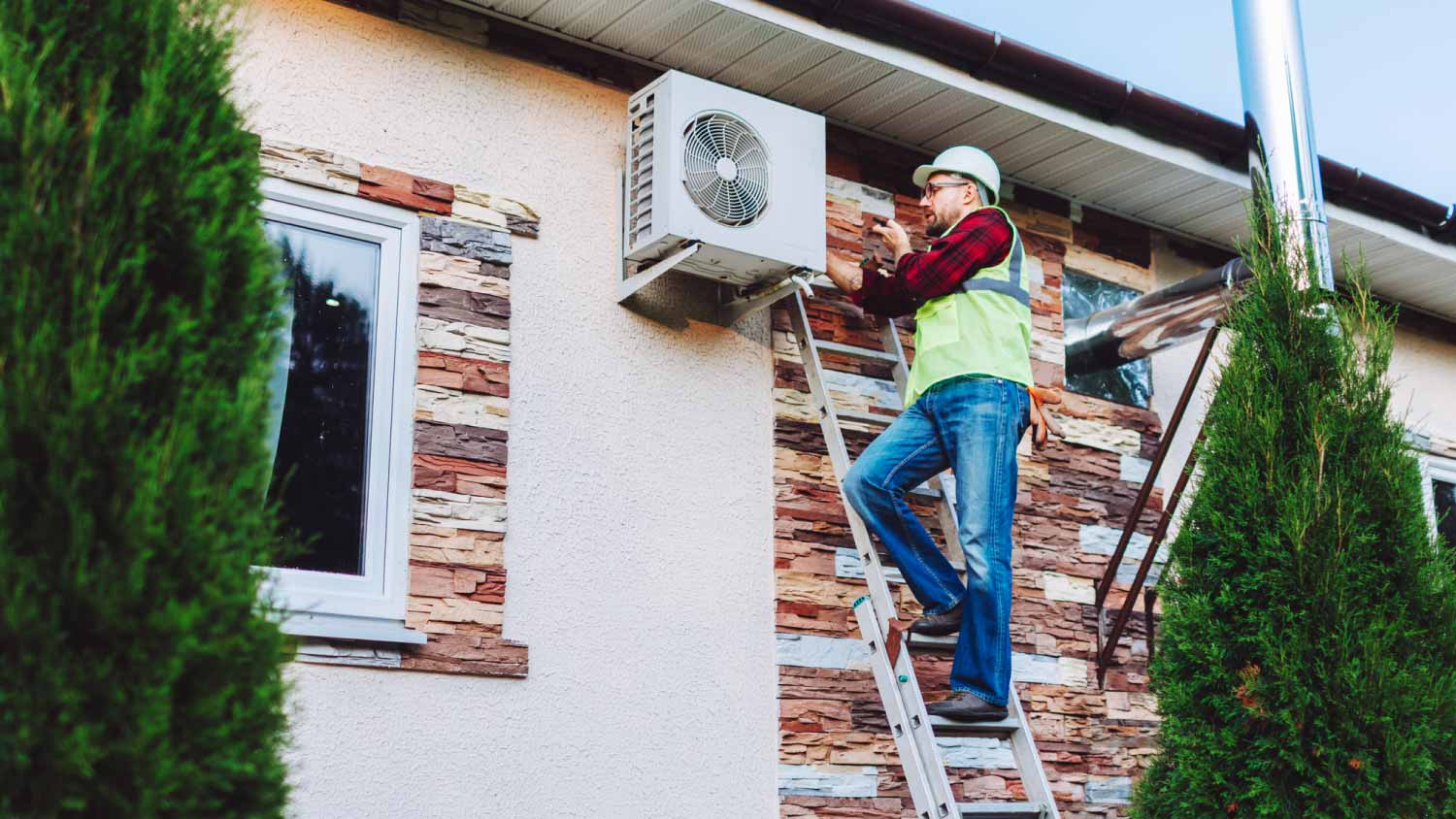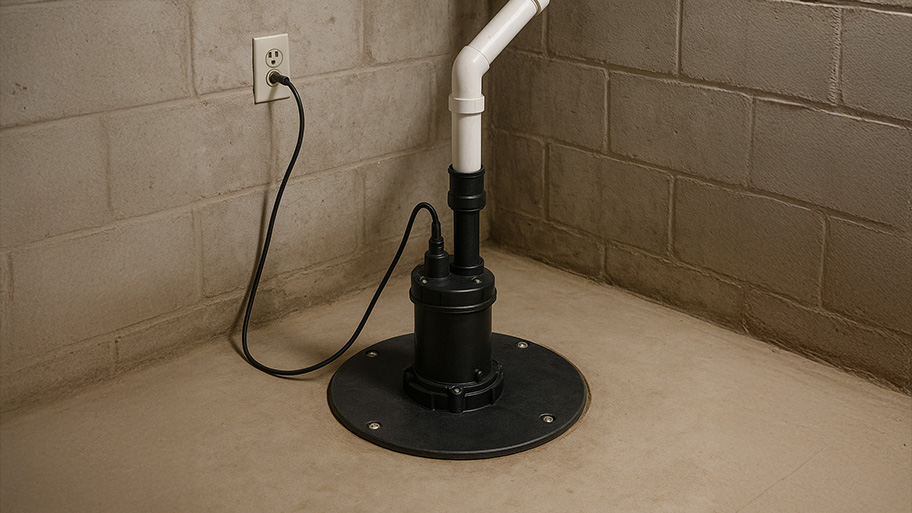
Your solar well pump cost depends on your well depth and flow rate. Explore these cost factors and more to budget for an eco-friendly pump.
The pressure is on, but don’t sweat it


Low-pressure situations are usually desirable, but pressure is a touchy subject when it comes to your well water. It’s an important part of maintaining proper water pressure to your sink, shower, and other water fixtures while also preventing premature wear and tear to your well pump. Since factors like flow rates and pressure switch ranges can vary, choosing well pressure tank sizes isn’t a one-size-fits-all situation. Check out the steps below for how to size a well pressure tank.
By installing a well pressure tank that’s the right size for your household, you can save money and help the tank run more efficiently. If you choose one that’s too small, the pump may cycle too quickly. This can wear down the tank and force you to replace it earlier than you would if it were the right size.
On the other hand, a larger-than-necessary well pressure tank won’t affect how your well operates, but it will take up extra space and cost more money.
Need a new well pressure tank, but not sure which size to get? Let’s break down how to determine the size of a well pressure tank.
The flow rate of your pump refers to how many gallons per minute (GPM) it delivers. This is typically tested when you or a professional drill a new well and may be in your records, but you can test it later if you don’t have the information handy.
Pressure tanks are filled with one part water and two parts air to create pressure in your water fixtures, so measuring the flow rate takes some calculations. To perform a simple test, get a few buckets that have either measurement lines or a standardized size, such as 5 gallons. Without any other water sources running, fill your bucket(s) for 60 seconds at full blast from a garden hose. The number of gallons at the end of the 60 seconds represents your flow rate—for example, if you have 10 gallons at the end of the test, your flow rate is 10 GPM.
The drawdown capacity of your pump refers to the usable amount of water stored between a high- and low-pressure range. When water flows out of the tank to your water fixtures, the tank pressure decreases until it hits the low end of the range, such as 30 PSI (pounds per square inch), then turns on the pressure switch until it reaches the high end of the range, such as 50 PSI.
When multiplied by the flow rate, the minimum runtime describes how long the pump takes to give you the appropriate drawdown capacity. The standard guidelines for GPM and minimum runtime are as follows:
| GPM | Minimum Runtime per 1 GPM of Flow |
|---|---|
| 0–10 | 1 gallon |
| 10–20 | 1.5 gallons |
| 20+ | 2 gallons |
As an example, a pump with a 10 GPM flow rate should have about a 10-gallon minimum drawdown capacity. A pump with a 16 GPM flow rate multiplied by 1.5 should have a 24-gallon minimum drawdown capacity.

The pressure switch setting refers to the low and high pressure ranges that determine when your well pump should turn on or off. Settings vary, but most pumps are either 30/50 or 40/60. The lower of the two numbers represents the PSI that triggers the pump, and the higher number is the PSI that turns off the pump. Most pressure tank manufacturers provide a chart with the unit indicating the drawdown capacity in reference to the pressure switch setting.
Once you’ve determined the flow rate, drawdown capacity, and pressure switch setting, you can calculate your tank capacity needs. Pressure tank sizes are standardized by size and associated drawdown volume:
| Tank Size (in Gallons) | Drawdown Capacity (in Gallons) |
|---|---|
| 20 | 6 |
| 30 | 9 |
| 50 | 14 |
| 85 | 25 |
| 120 | 36 |
Let’s say your pump has a 10 GPM flow rate and 1 GPM runtime for a 10-gallon drawdown capacity. According to these standards, you would need a 50-gallon tank. This is where the pressure switch setting comes in: The higher the pressure switch setting is, the lower the drawdown capacity is. If you’re operating with a higher pressure in this example, you may need to upgrade to an 85-gallon pressure tank.
Choosing the right size pressure tank is just the first step in making sure your system runs smoothly. Here are a few other tips for taking care of your well pressure tank:
Examine the tank: From time to time, inspect the tank for leaks, corrosion, rust, cracks, or other damage. If you spot any of these signs, reach out to a professional.
Set the right pressure: When your well tank pressure is too high, it can force the pump to turn on and off too quickly, which may lead to burst valves in the tank. To avoid this, you should test the pressure once per year (and adjust it if necessary).
Schedule professional well inspections: To keep your tank (and the rest of your well system) working properly, have a pro check it out every year. On average, a well inspection costs between $250 to $550.
A plumber can install a well pressure tank for between $125 and $200 in labor costs, and they can help you select the appropriate size for your home as part of the cost of well pressure tank replacement.
If you plan to install the well pressure tank yourself, determining the size on your own might be more convenient than calling a local well pump company. Sizing your own well pressure tank requires minimal time and resources, and you can usually get input from the supplier as you start shopping around for the unit.
From average costs to expert advice, get all the answers you need to get your job done.

Your solar well pump cost depends on your well depth and flow rate. Explore these cost factors and more to budget for an eco-friendly pump.

Drilling a well is no small feat. You’ll need to plan for excavating, a pump, and more. This guide will help you estimate and manage your well drilling costs.

Find out the average heat pump repair cost, what impacts pricing, and how to save. Get transparent estimates and tips for homeowners planning repairs.

Keep your water flowing and discover what causes air in water pipes with a well. Learn the signs of trouble and what to do if your well pump is acting up.

Why does well water appear cloudy and bubbly sometimes? Don’t worry. The problem is usually not a major one, but you can always test your water.

Does a sump pump need a dedicated circuit? Find out the wiring and electrical requirements for installing a sump pump in your home.